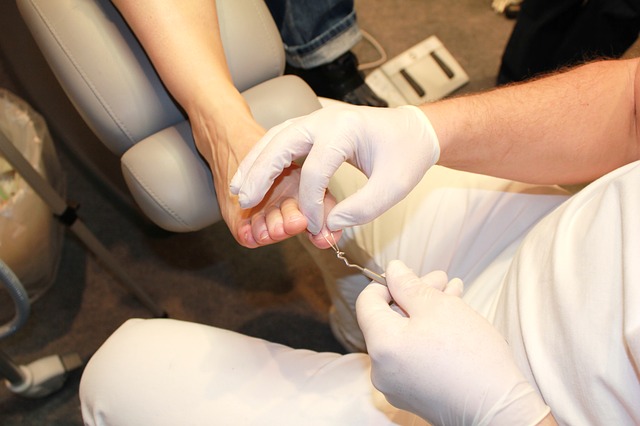Podiatrists and orthopedists both deal with treating the human body and helping to alleviate discomfort, but their roles branch off from there. Podiatrists have a much more specialized discipline, working with the feet and surrounding areas. Meanwhile, orthopedists keep their attention on the musculoskeletal system and any irregularities.
What’s a Podiatrist?
A podiatrist is a doctor who focuses on the lowest extremities, namely the feet and ankles. While all medical schools provide training in regards to treatment of the feet, podiatrists receive a more thorough education. Upon finishing their four-year podiatry program, a podiatrist will take part in a residency to learn about surgery. Licensure is given to podiatrists on the basis of successful passage of state board exams.
When Should I See a Podiatrist?
You should see a podiatrist whenever you’re dealing with prolonged foot pain or some kind of abnormality, such as a bunion. Although some foot pain can be easily explained by things like walking long distances and be alleviated by things like soaking in a hot tub or taking over-the-counter medication, other instances are far longer-lasting. For things like bunions, they need the intervention of a podiatrist to figure out the best plan of action. This may include surgery if non-surgical methods aren’t successful.
Causes
Foot problems don’t just happen randomly. When people are busy eating right and keeping their arms and legs strong, they might forget about how much their feet matter. Wearing uncomfortable or impractical shoes, like high heels, on a constant basis can cause serious damage. When a podiatrist examines a patient’s feet and asks them about their habits, they may uncover a pattern that has lead to their degradation. The podiatrist should then offer some solutions that could better support the patient’s feet, in hopes that they follow through.
What’s an Orthopedist?
Orthopedists deal with problems of the musculoskeletal system, which includes bones, muscles and joints, often in a surgical manner. Their practice goes all over the body, including the feet. The path to becoming an orthopedist can take more than a decade. Candidates must complete an undergraduate as well as a medical degree and an orthopedic residency.
There are many reasons why someone would need to see an orthopedist. If they’ve broken a bone or fractured a limb, an orthopedist will be able to help them remedy it. Conditions that develop over time, such as osteoporosis, should be examined by an orthopedist. Seeing an orthopedist can provide a patient with a much better quality of life through medical intervention, such as hip replacements.
When Should I See an Orthopedist?
The habits one needs to have a good musculoskeletal system are quite similar to those that are emphasized for a generally healthy lifestyle. One needs to be sure to get plenty of exercise, eat well by having a good intake of things like iron and magnesium. They should also avoid smoking and be very careful with how they move, to prevent any sort of sudden injury. Should you injure a limb, joint, bone, or muscle, get in contact with an orthopedist as soon as possible.
How to Choose
Both podiatrists and orthopedists provide valuable medical services. Depending on your issue, you may choose to see one or both. For instance, if you hurt your foot, you might first consult with a podiatrist and then an orthopedist for a second opinion. Provided each offers credible advice, you’ll be able to make the best possible decision for you.
Dr. Gregg Schellack DO is a veteran orthopedic surgeon based in Calfornia. Through his years of practice, Gregg Schellack Orthopedist has given his patients hope. If you’re dealing with any problems related to your musculoskeletal system, please give our office a call today. Dr. Schellack would be honored to be able to help you.
